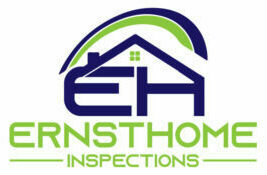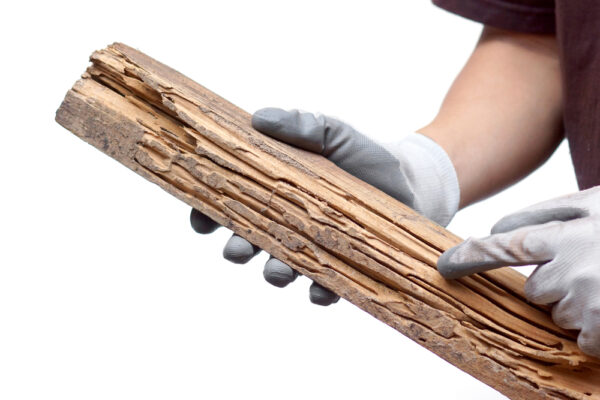Termites are insects that can cause way more damage than people give them credit for. Termite damage can cost you your entire home if you continually postpone that call for a proper termite inspection. Due to the amount of damage termites can cause, it is critical that you set up an inspection and find a remedy as soon as you suspect that you have termites within your home.
These pests are known to devour different types of materials such as wood, drywall, and even fabric. This means that, when present, they make everything in your home susceptible to damage, not just the wood structures. Once found, you will need to work with a specialist to get rid of the termites, the damages they caused, as well as implementing additional preventative measures if necessary. The first step in understanding termite presence in the home is to acknowledge the effects that they can have.
The Effects of Termites in the Home
Termites have the ability to attack different types of surfaces and properties. The following are common effects of having termites living with you in your home.
Wall Damage
Termites will normally destroy and live in walls over any other part of your home due to the amount of wood present in the framing as well the protection that they provide. If the pests are neglected, they will spread to other parts of the home in an effort to accommodate themselves considering that they can multiply very fast. With a proper inspection this wall damage and infestation can be quickly identified and mitigated.
A good termite inspection service provider will work hand in hand with pest control to prevent further damage as well as suggest proper treatment. In addition to the walls in your home common areas that termites infest and the places you should check include woodpiles, damp areas, as well as loose wooden paneling. Do not postpone that call to a termite inspector, as termites are capable of creating a lot of destruction to any wooden material in your house.
Foundation Damage
The foundation of your home is a massive target for termites to attack and this can cause a lot of direct and indirect damage. By damaging the foundation, you are more likely to see effects on the structural integrity of your home. Some types of termites such as the subterranean termites live underground, making the foundation an easily accessible target. Any gaps in wood will provide them access to the home and in the initial stages, it can be difficult to notice their presence but in a short time, you or your inspector will find clear signs of their presence.
The most common foundation-specific termite damage repair and prevention option today is the use of pesticides in the sourrounding soil of your home. This strategy not only acts as a barrier for entry, but more importantly, you will be able to kill any existing termites. An alternative preventative approach to protecting your foundating would be to install an aluminum barrier during the building process of the home.
The bottom line here is that termite infestation into the foundation of your home can be catastrophic. The weakening of the foundation can lead to overall structural collapse of your home and this should be prevented by any means necessary. Save and protect your property from these insects with the help of a professional in the field.
Fabric Damage and Infestation
Termites do not just feed on wood and other hard materials, they also tend to reside in fabric and can devour every bit of your wardrobe and furniture. Some other places that can become a home for termites include carpets, curtains, and even bedding. Out of all of these areas, carpets tend to be the most popular area for termites because they are naturally closer to the ground making it easily within reach of termites infiltrating from the ground up. It isn’t uncommon to find termite eggs in long, shag carpets during a termite inspection due to their relative low location. A simple way to help reduce the possibility of termite infestation in these soft materials is by aerating them on a regular basis and possibly even treating the fabric with chemicals.
Apparent Signs of Termites in the Home
We always recommend trusting a professional to perform a termite inspection, but it is important that you understand what termite damage looks like so you can act immediately if any signs are apparent. Below is a list of signs that you should be aware so that you can identify and act appropriately, possibly saving your home from a catastrophic infestation.
Hollow or Damaged Wood
Look for any wood damage on the ground as well as behind surfaces such as walls and cabinets. Through tapping the suspected surface or area you can identify potential termite damage if a hollow sound is heard, termites tend to chew through the center of wood so that they can remain hidden from plain sight. Hollow wood that is supporting heavy loads is very dangerous and a termite inspection service should be called immediately upon this finding.
Mud Tubes
Termite mud tubes are pencil-like structures usually running from a termite nest, wood, or concrete. Mud tubes are used by termites in a number of ways, some are used as working tubes (common movement from point A to point B) as well as exploratory (used to explore outside of the soil). The finding of a mud tube in or around your home should raise an instant red flag and you should act appropriately by calling a professional. Destroying mud tubes is never effective in ridding your home of termites, these termites are easily rebuilt and most of the time these mud tubes are empty, thus the pests will remain alive even after destroying their tubes.
Blistered Wooden Floors
Individuals with wooden floors should call for termite inspection as soon as they notice blisters, bubbling, or small protrusions from their floor surfaces. This is a sign that termites are feeding on the wood below and is very common with subterranean termites, which prefer to damage the subfloor and not the surface of the wood. The appearance of this type of damage is very similar to that of the water damage in wooden flooring.
Termite Droppings (“Frass”)
For those who are thorough in their inspection, you may notice pellets that resemble sawdust or coffee grounds. These pellets are most likely excrement (also known as “frass”) from dry wood termites. Dry wood termites drill through wood with ease and will lay droppings throughout their destruction path but most often in their nests. The termites will fill up their nest with the excrement until it is time to flush it clean and they will utilize what are known as kick out holes to release the pellets. That being said, be sure to keep an eye out for piles of these pellets at the outlet of small holes in your wood framework and paneling.
Clicking/Head Butting
Termites communicate by banging their heads/bodies into the surrounding wood that they are feeding on. This sound can be heard by the human ear as a “dry rattling” sound and is an indication that termites are present. In any specific instance that the termites feel threatened they are more prone to make this sound to warn other termites of the potential threat. If these sounds are heard, it is best to play it on the safe side and hire a certified termite inspector to confirm your suspicions.
Final Words
As you can see termites can come from many different sources, reside in different locations, and cause a whole lot of damage to your home. With that being said, it is critical to always be on the lookout for the signs mentioned above and to act quickly upon any sighting/suspicion. If any of the above signs are noticed, you should contact a professional termite inspector immediately to begin the processes of ridding your home of these persistent pests. A professional termite inspection will always give you the best chance of identifying the presence of termites within the home, thus at Ernst Home Inspections we will work effortlessly to confirm any suspicion your (or we) may have.

